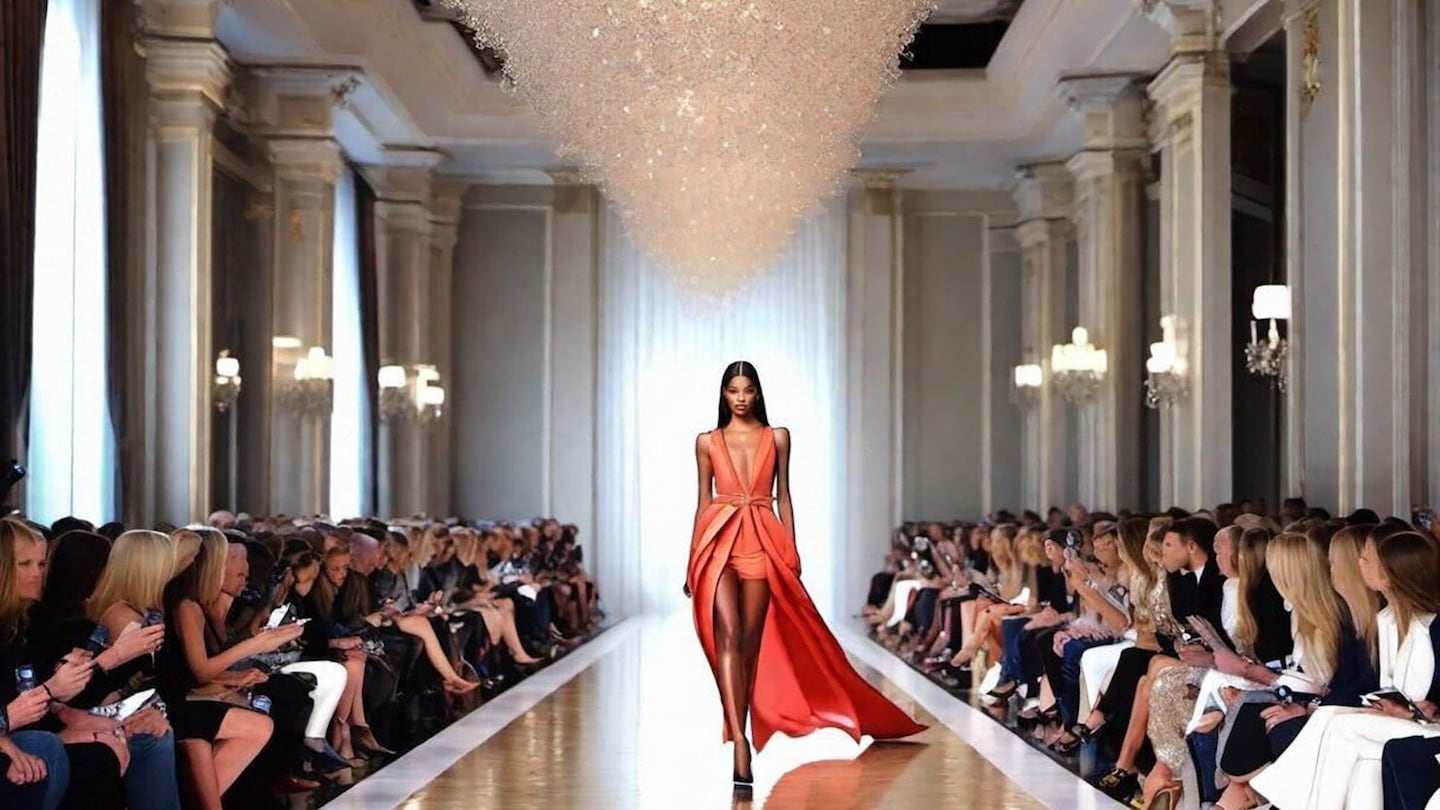
Agenda-setting intelligence, analysis and advice for the global fashion community.

Agenda-setting intelligence, analysis and advice for the global fashion community.

Julienne DeVita, a lecturer at Parsons’ future studies programme, is in the middle of devising her spring semester course, “Designing with AI.” The class will expose students to the multidisciplinary nature of AI, and give them hands-on experience in using a range of AI tools such as Midjourney and Adobe Firefly.
But teaching them how to utilise those programmes is the easy part, DeVita said. The real challenge lies in preparing her students for the biases and shortcomings of the technology.
Midjourney, for instance, has proven to replicate stereotypes of people of colour and are much more likely to default to caucasian skin tones when generating images of humans. When directed with generic prompts such as “attractive person” or “house in China,” tools such as Stable Diffusion and Dall-E tend to uphold mainstream biases, a recent Washington Post investigation found. All the attractive people are fair-skinned. Every home in China has a traditional curved roof, an architectural style that dates back thousands of years.
“[AI] builds off of its past predictions which, if they’re based on something harmful, it can get really dangerous,” said DeVita.
ADVERTISEMENT
DeVita isn’t the only educator addressing the risks of AI. Professors at fashion programmes including Central Saint Martins and Pace University are all contemplating ways to incorporate bias mitigation into their AI curriculum, or at the very least, make their students aware of the shortcomings of the technology. Some are even involved in developing solutions for AI’s ethical flaws.
One approach is to simply talk to students about AI’s inclination toward stereotypes, engaging them in critical discourse. Jeff Karly, another fashion lecturer at Parsons, said he invites questions from students as they demo and experiment with AI programmes in his “Digital Studio & Branding” class.
Karly said he instructs his students to always spell out specific prompts regarding race, gender, body size and hair type in order to avoid AI’s stereotypical defaults. In fact, he grades his students on their attentive use of identifiers in their assignments, such as a fashion photography project that requires the use of Midjourney.
Encouraging conversation with students is key, DeVita added. By imposing discussion questions such as, “How does generative AI’s ethics problem impact the user experience,” students are able to better understand their future role and responsibility in curbing AI’s biases and moving the fashion industry forward in an ethical way.
As much as half of her class could be discussion-driven, DeVita said, while the rest would focus on the practice of AI in design.
“I think it’s so important as creative people that we are curious and we question and we push back” said Margarita Louca, digital lead for the fashion programme at Central Saint Martins. “We have a responsibility to our students, to this new generation of young creatives, to equip them with not just hard skills, but soft skills. For me, soft skills are the ability to think critically, to add a philosophical angle.”
Generative AI doesn’t exist in a vacuum. And it’s important that students know the broader social and cultural context that informs these tools. DeVita said she plans on having her students research how the datasets that feed into AI can be improved. Their final project will require students to address the ethics of AI and reflect on topics including licensing, dataset-building and creative ownership.
Some professors are themselves correcting biases in the datasets that power generative AI. Christelle Scharff, faculty at Pace University’s computer science department, said she has been incorporating African wax prints and terminology to expand Fashion MNIST, a popular fashion knowledge dataset used by machine-learning systems.
ADVERTISEMENT
Training students as both thinkers and doers in using AI reduces the risk of them reproducing bias in their work. But it also provides them with the knowledge needed to face these challenges as they enter the workforce and grapple with discrimination or issues of inclusivity beyond AI, said Karly.
“I’d like to think this ensures that the next generation of fashion professionals approaches their craft with cultural mindfulness,” he added.
Digital product passport technology could tackle counterfeiting, help brands meet regulatory requirements and unlock new sources of revenue and engagement. Michele Casucci, founder and GM of Certilogo and Robin Mellery-Pratt, BoF’s head of content strategy, gathered executives in Paris to discuss its potential.
The search giant is rebuilding its shopping experience around AI, rolling out new features like personalised product feeds and AI-powered shopping guides, beginning this week.
To boost sales and create a better customer experience, companies are revamping the e-commerce search bar to make it easier for shoppers to find products or even shop in new ways.
Concerns are growing that the technology’s transformative power has been oversold. Kamali, on the other hand, is as convinced as ever that, for her at least, it marks the start of a new creative era.